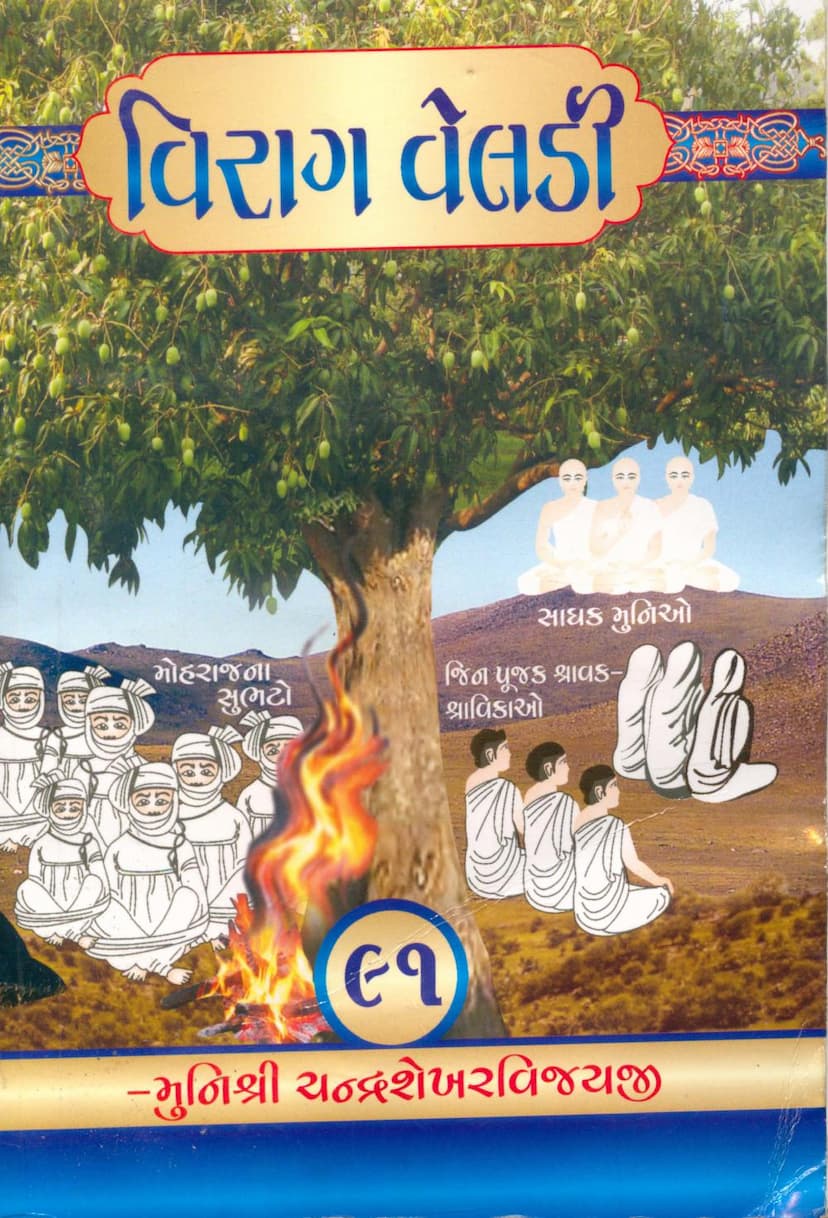Virag Veladi
Added to library: September 2, 2025

Summary
Here's a comprehensive summary of the Jain text "Virag Veladi" by Chandrashekharvijay, based on the provided pages:
Book Title: Virag Veladi (Meaning: The Creeper of Dispassion/Detachment) Author: Muni Shri Chandrashekharvijayji Publisher: Kamal Prakashan Trust
Core Theme and Purpose:
"Virag Veladi" is a Gujarati translation and commentary on the first chapter (Stabak) of the monumental work "Vairagya Kalpalata" by Mahamahopadhyaya Shrimad Yashovijayji. The original "Vairagya Kalpalata" is a vast text of ten thousand verses dedicated to the theme of dispassion (Vairagya). This particular chapter, "Virag Veladi," consists of 269 verses. The book aims to make the profound teachings of dispassion accessible to a wider audience through a sensitive and explanatory translation in Gujarati.
Key Concepts and Teachings:
The central message of "Virag Veladi" revolves around the interconnectedness and vital importance of three key spiritual elements for a seeker on the path of liberation (Moksha):
-
Virag (Dispassion/Detachment): This is presented as the foundation of spirituality. Without a strong and firm base of dispassion, spiritual progress is impossible. The text emphasizes that detachment is not merely about renouncing the world but about cultivating an inner detachment from worldly desires and affections.
-
Bhakti (Devotion): The text highlights that Virag can sometimes be challenged by powerful inner forces. In such critical moments, the path of devotion, specifically devotion to the Jinas (Jineshwar Dev), serves as a refuge and a source of strength. Jina-bhakti is depicted as a force that can make the creeper of dispassion fearlessly stand firm.
-
Samadhi (Concentration/Equanimity/Tranquility): The book stresses that devotion alone is not sufficient. To make devotion powerful and stable, one must cultivate Samadhi. Ultimately, Samadhi is the protector of both Virag and Bhakti. Once Samadhi is attained, devotion becomes an intrinsic, natural state rather than a mere ritual. The text describes Samadhi as the ultimate goal, achieved through the integration of Virag, Bhakti, and concentration. The latter part of the book details the state of Samadhi, portraying the serene and joyful lives of monks who possess it, showing how it leads to inner peace and detachment from all worldly concerns.
The Metaphor of the "Virag Veladi" (Creeper of Dispassion):
The title itself, "Virag Veladi," suggests a powerful metaphor. Dispassion is like a creeper that needs to be cultivated and protected. The text illustrates the challenges faced by this creeper from the "king of Moha" (the internal enemy of delusion and attachment) and how it can be strengthened and sustained through devotion and Samadhi.
Role of Sadguru and Scriptural Study:
The book emphasizes the indispensable role of a spiritual teacher (Sadguru) in guiding the seeker. The author, Muni Shri Chandrashekharvijayji, shares his personal journey of learning and inspiration from his Gurudev, highlighting how the teachings of Mahamahopadhyaya Yashovijayji were transmitted through his own spiritual practice and the guidance of his elders. The importance of studying scriptures and understanding their deeper meanings, with the help of a Guru, is also underscored.
Combating Adversity:
The text uses allegorical language, portraying "Moharaja" (King Moha) and his armies (internal enemies like lust, anger, ego, greed, attachment, aversion) attacking the "fortress of Character" (Charitra Dharma). It explains how through the "strategy" of pure devotion and the "weapon" of Samadhi, these internal enemies can be defeated. It also touches upon dealing with external challenges and suffering through a spiritual lens.
Key Takeaways for Seekers:
- Foundation: Virag is the essential basis for all spiritual progress.
- Support: Bhakti provides strength and protection against spiritual challenges.
- Goal: Samadhi is the ultimate state that stabilizes and integrates Virag and Bhakti, leading to inner peace and liberation.
- Guidance: A Sadguru and diligent study of scriptures are crucial for understanding and implementing these principles.
- Inner Strength: The teachings equip seekers to face internal and external obstacles with equanimity and strength.
Structure and Presentation:
The book is a translation and elaboration of specific verses from a larger work. It uses devotional language and philosophical insights to convey the Jain teachings on detachment and spiritual practice. The appendices (Parishisht) at the end provide further guidance on monastic conduct, the importance of scriptural study, and the practical aspects of spiritual discipline, reinforcing the core message of the book.
In essence, "Virag Veladi" serves as a spiritual guide, urging individuals to cultivate dispassion, devotion, and equanimity as the path to true happiness and liberation, drawing wisdom from the profound tradition of Jain philosophy.